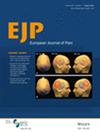In Bayesian models including predictive processing, the magnitude and precision of pain expectancies are key determinants of perception. However, relatively few studies have directly tested whether this holds for pain, and results so far have been inconclusive. Here, we investigated expectancy effects on pain experiences and associated affective responses.
In two studies, healthy participants (n = 30 in each) received painful electrical stimuli preceded by explicit pain predictions. In study 1, the magnitude of pain predictions and administered pain intensities were varied. In study 2, the magnitude and precision of pain predictions were varied, while administered pain intensity was kept constant. Experienced pain intensity was the primary outcome in both studies.
Pain experiences assimilated towards both under- and overpredictions of pain. In study 1, however, effects were small, if present at all, for non-painful stimuli and effects were not necessarily larger with predictions of greater magnitude. In study 2, assimilation of pain experiences appeared regardless of precision level, while no significant effects on EMG eyeblink startle responses were observed. Moreover, under- and overpredictions caused disappointment and relief, respectively, with greater disappointment upon precise than imprecise predictions.
The influence of pain predictions on pain might be more complex than assumed in simple instantiations of current theoretical frameworks, with no systematically stronger assimilation of pain experiences to larger and more precise predictions. Since overpredictions are associated with relief, but underpredictions with disappointment, these findings underline the importance of providing correct predictions when preparing for upcoming painful procedures.
Our work supports, challenges, and extends the application of Bayesian and predictive processing frameworks to the influence of pain predictions on pain. Under- and overpredictions of pain yielded assimilation of pain experiences, but assimilation was not systematically stronger with larger prediction errors or greater precision. Moreover, under- and overpredictions resulted in disappointment and relief, respectively. This research signifies the importance of establishing accurate predictions of pain in clinical practice.



